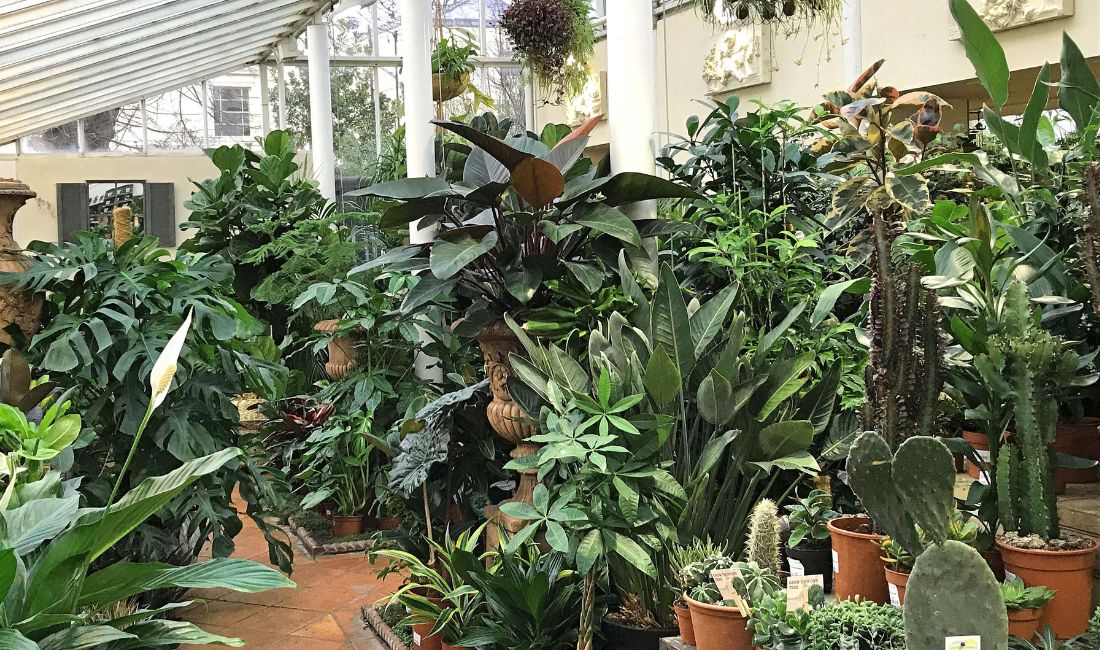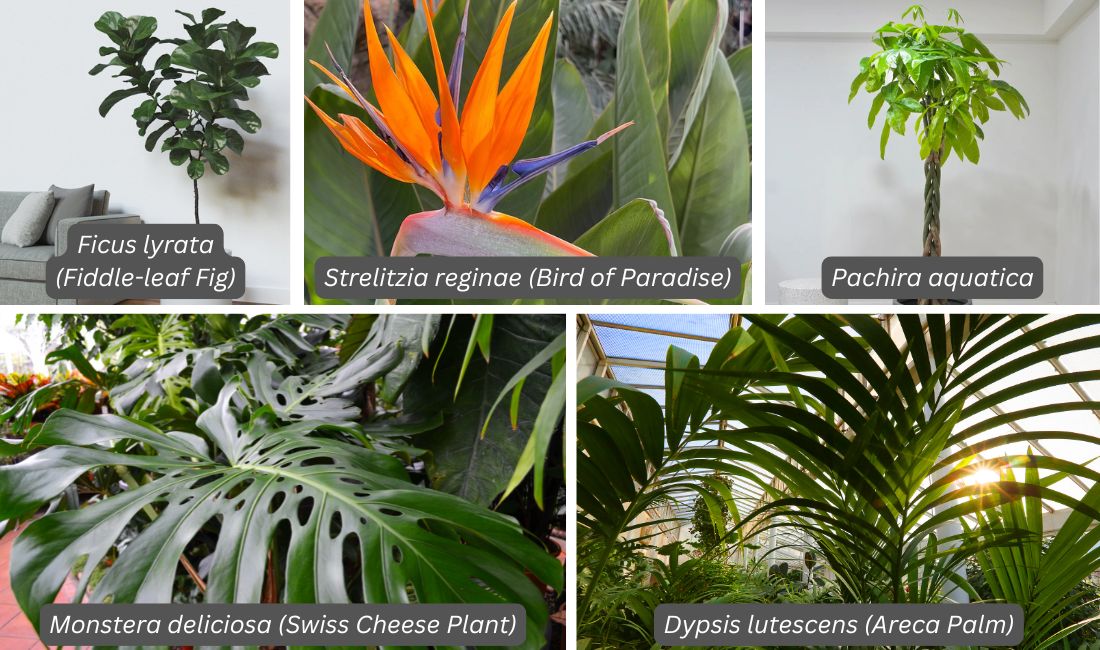
Large houseplants offer many of the benefits of smaller houseplants, just on a larger and more dramatic scale! If you’re going for an indoor jungle effect, large houseplants are a must, providing height and impact.
Like many other houseplants, large houseplants have been proven to offer improved air quality, reduced stress, and enhanced well-being, including even increased productivity.
Being large they can also instantly transform a space by bringing natural beauty, life and vibrancy to a room, and can be used to complement, match, or contrast with interior design and style. Large houseplants can be used as interior design elements in their own right, whether grouped with other houseplants for impact, or used as a focal point to make a statement. In addition, the extensive range of beautiful interior pots and planters in all sizes, patterns, colours and materials means that there’s something for every taste and style.
Many large houseplants are relatively low maintenance, can tolerate a range of conditions, and being in larger pots, can cope with the occasional missed waterings.
Caring for Large Houseplants
As houseplants originate from different environments all over the world it’s always worth checking the exact growing conditions preferred by your favourites as some prefer more natural light than others. As a general rule, larger houseplants need slightly more light than the same plant in a smaller size as they have more foliage to support. It’s also important to ensure there is enough space for the plants to grow in their natural shape.
The majority of houseplants thrive best when grown in pots with drainage holes which are then placed in outer decorative pots without drainage holes. Not only does this reduce the risk of water leaking onto the floor or furniture but also increases the humidity around the plant, especially if you add Hydroleca clay granules or pebbles/gravel to the outer pot. You may also wish to place larger houseplant pots on top of an extra plant saucer, preferably with wheels, to make it easier to move or rotate them when necessary.
It's important to be aware that some houseplants are toxic to pets – we do recommend always checking with some online research.
Tips for ensuring the health and longevity of your large houseplants include:
Larger houseplants have larger root systems, so they may need less frequent watering than smaller plants but it’s still crucial to avoid both overwatering and underwatering. The easiest way to check is to put your finger into the top few inches of the compost – if it feels dry, it’s time to water.
Periodically rotate your houseplants to ensure all sides receive the same amount of light.
In addition to positioning houseplants in outer pots as described above, you can further increase the humidity around them by misting the plants on a regular basis. Remember that many of these plants originate in habitat such as forests with much higher humidity than our modern-day homes.
Feed large houseplants regularly with a balanced, water-soluble houseplant fertiliser, following the instructions on the packaging.
Unlike smaller houseplants that need repotting more regularly, larger houseplants need repotting only every 2 to 3 years, depending on the species and the active growth. Specialist houseplant compost is available, please ask our team for details.
Cleaning your plant’s leaves occasionally is particularly important for larger houseplants with larger leaves, as any accumulated dust can prevent chlorophyll from absorbing the sunlight required for photosynthesis. Wipe the leaves with water or specialist products.
Pruning can help manage the size and shape of large plants and encourage bushier growth. Remove dead or damaged leaves or stems as needed.
Regularly check for any pests and diseases and treat accordingly – our houseplant team are happy to advise.
Our Favourites
Pachira aquatica (Money Tree) – often trained with braided or twisted stems, this popular fast-growing houseplant grows about 30 to 50cm per year. Thriving on bright indirect light and regular watering, Pachira grows up to about 2m high as a houseplant. Can be pruned to control the size. Much sought after by those who practice feng shui as this plant is believed to bring you positive energy and prosperity.
Dypsis lutescens (Areca Palm) – an elegant indoor palm with slender bamboo-like stems and arching feathery fronds, perfect for creating that indoor jungle look! Prefers bright indirect light and benefits from regular misting of the fronds to maintain humidity. As a houseplant, grows up to 2m.
Ficus lyrata (Fiddle-leaf Fig) – stunning indoor plant with large, glossy fiddle-shaped leaves, thriving in bright to medium light. Slow growing but can eventually reach 2m indoors. We recommend cleaning the large, dramatic leaves occasionally to remove any dust and debris. Benefits from regular misting to maintain humidity. Adds impact to any space!
Strelitzia reginae (Bird of Paradise) – easy to care for and thriving in bright light, this striking plant has large upright leaves and distinctive orange and blue flowers resembling birds of paradise. Slow growing, up to 1.5m indoors. Perfect statement plant for sunny interiors.
Monstera deliciosa (Swiss Cheese Plant) – always popular and never out of fashion, with stunning large green heart-shaped leaves, often perforated, up to 90cm long. Climbs with aerial roots so benefits from growing up a moss pole for support. Grows quickly, about 30 to 50cm per year up to an indoor maximum of 2.5m.

Clifton Nurseries Garden Centre
London, W9 2PH
0207 432 1867
Monday – Saturday 9am-5:30pm, Sunday 10.30am-4.30pm
Clifton Nurseries Garden Services
London, W9 2PX
